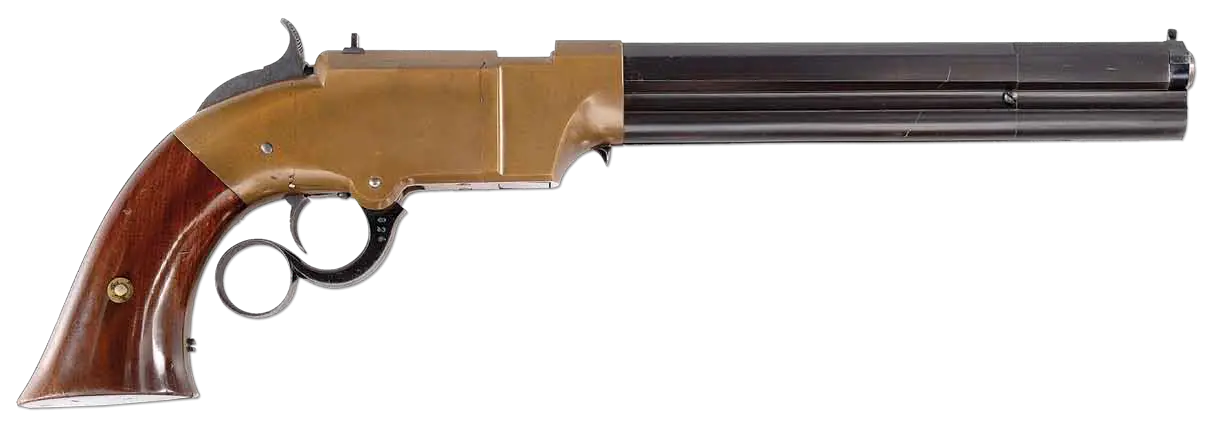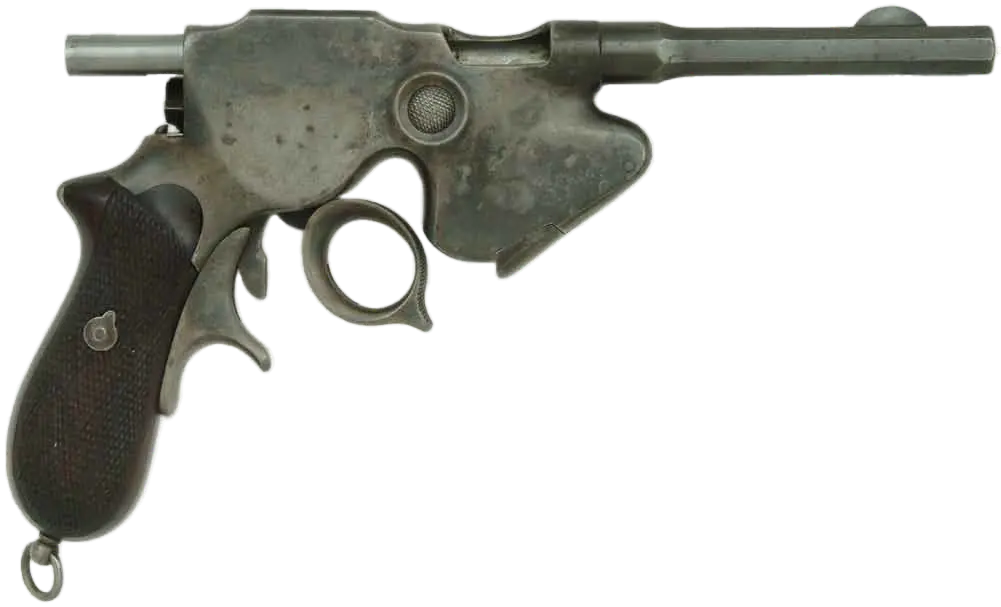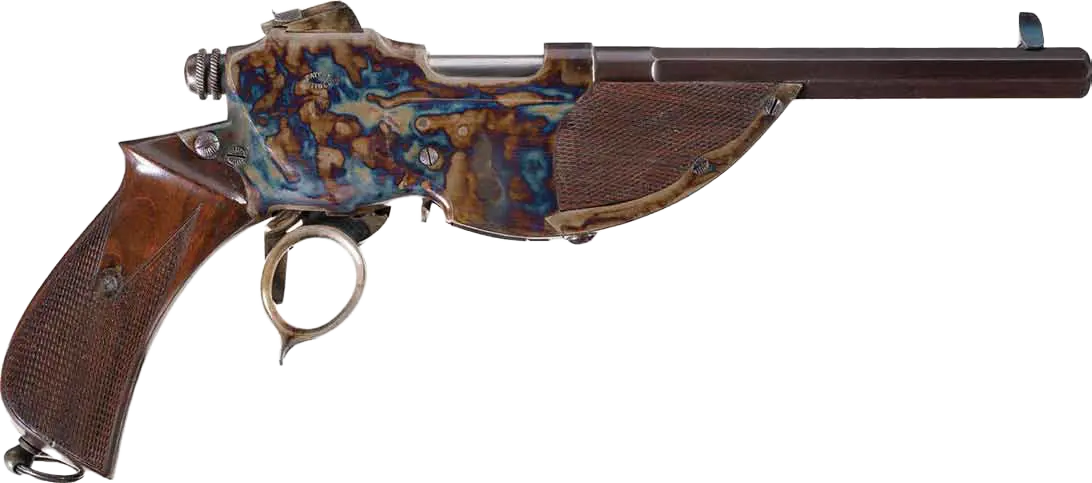History of repeating pistols leading to the development of the semiautomatic pistol
Smokeless gun powder the necessity for automatic operation.
Development of the automatic function in a firearm was dependent on the invention of smokeless powder. Black powder was sticky, dirty, and fouled arms quickly. The other necessity was sturdy ammunition, that would not collapse in the forceful operation of the automatic mechanism. Through the use of solid drawn metallic cartridge case and the use of jacketed bullets, ammunition evolved to be sturdy enough to withstand the violence of the automatic mechanism in operation.
Earliest designs of the automatic principle
The desire to have a firearm capable of completing the operation of reloading itself quickly and automatically was long time desire. References from 1663 and 1664 to some sort of semi-automatic pistol exist in the in the Records of the British Royal Society. But nothing very descriptive of the mechanism survives. It is difficult today to conceive of an automatic pistol that pre-dated the invention of cartridges.
In 1863, Orbea of Eibar, Spain produced a gas-operated semiautomatic pistol, a specimen of which was preserved in the Museo de Armeria at Eibar. It was a solid-frame revolver of .45 caliber or thereabouts with a gas-port near the muzzle and a piston connected with an arrangement of levers whereby the cylinder was revolved and the fired case ejected.
In the same year (1863) Regulus Pilon, an American, took out a patent for a small caliber rifle which was recocked by the recoil of the barrel. It was single shot only; there was no provision for self-loading from a magazine.
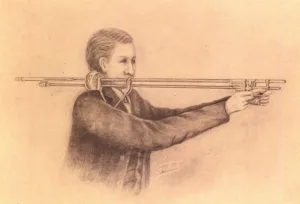
Curtis Rifle
In 1866 W.T. Curtis obtained a US patent on a gas-operated weapon which could be used either as a single-shot rifle or as a fully automatic machine-gun. It was heavy and cumbersome, with a breech which projected over the shoulder of the firer, and a complex bolt action.
Specifications filed by Plessner in 1872 and by Lutze in 1874 relate to pistols, while the records of the two following decades, 1870- 1890, are full of abortive attempts to apply the principle of gas operation to rifles.
These earlier inventions hardly ever got beyond the experimental stage-some even only existed on paper, because the designers were up against the problem of ammunition; for black powder fouling, paper and coiled-brass cases and soft lead bullets entirely precluded the application of the self-loading principle to pistols. One finds, therefore, that at this period, 1880-1890, the attention of inventors was directed largely towards altering existing rifles such as the Martini-Henry (in England), and the Werndl (in Austria), to some sort of automatic system.
The year 1883 is the great landmark in the history of the automatic principle, for it was in this year that the first of the Maxim patents were taken out.
The first specification was for altering existing shoulder rifles, and was abortive; it was from the second patent of 1884 that grew the machine-gun.
The Maxim gun, was invented by Hiram S. Maxim, an American engineer.
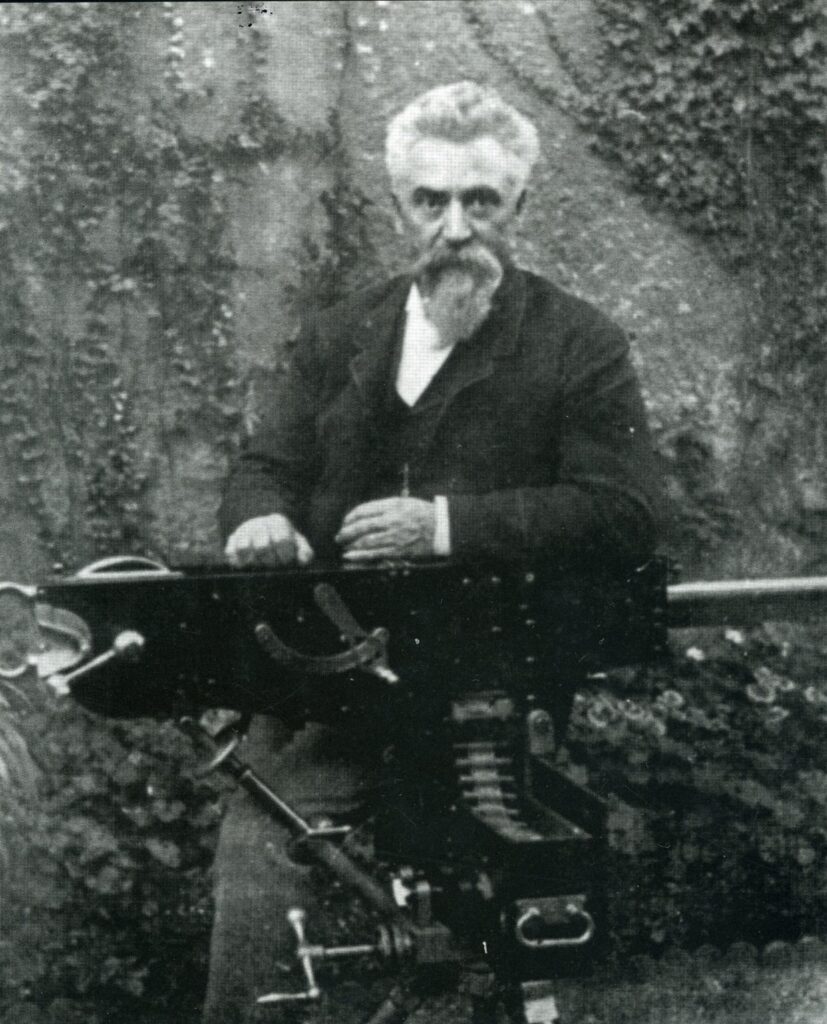
Hiram S. Maxim
It was the first machine-gun on true automatic principles, in which all the operations of extraction, ejection, feed and firing were performed by the energy of discharge.
Maxim’s system of operation is based on recoil; the cartridge is supported by a mechanically locked breech until the bullet has left the barrel, effected by the formation of an inverted toggle-joint which is broken on recoil of the barrel and breech-block after a short travel together.
The ability to create an automatic pistol had to wait until Major Rubin’s developments in ammunition had become generally known to designers. During the years 1886-88, this officer while serving in the Swiss Army perfected the modern compound rifle bullet, which consists of a lead core surrounded by a jacket of cupro-nickel, except at the base where the lead is exposed. As a further step, he combined this with a solid-drawn, rimless brass case, in which the bullet could be firmly seated without difficulty.
Smokeless powder was just then being introduced for rifled arms, and this combination at last made the small self-loading hand arm a practical possibility. . ·
There is one other patent which should be mentioned before going further, as it belongs to the days before Major Rubin’s invention.
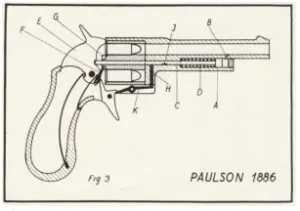
Paulson 1886 design
In 1886 Paulsen filed a specification for a gas-operated revolver. The powder gases were trapped about two-thirds way up the barrel and drove back a piston which directly forced back the hammer, cocking it and revolving the cylinder. In the same specification he seems to have had the idea, as an alternative, of using recoil. (no record of production)*The information in this section comes from Textbook of Automatic Pistols by R.K. Wilson.
The automatically functioning pistol is an evolution of the early self-loading designs. The earlier “self-loaders” were pistols that used a manually operated mechanism to load ammunition from a magazine to the chamber, and then after discharge, extract the spent casing and load another round of ammunition. These were as a group, a variant of a lever action system. The self-loaders worked out most of the conveyance and extraction of ammunition functions that were necessary to incorporate into the automatic designs. One of the most famous of these self-loaders was the American design used in the Volcanic pistols.
Video regarding Volcanic pistols
Video regarding Bittner model 1896
Video regarding early semiautomatic pistols
Video overview of 19th Century Semiautomatic Pistols




